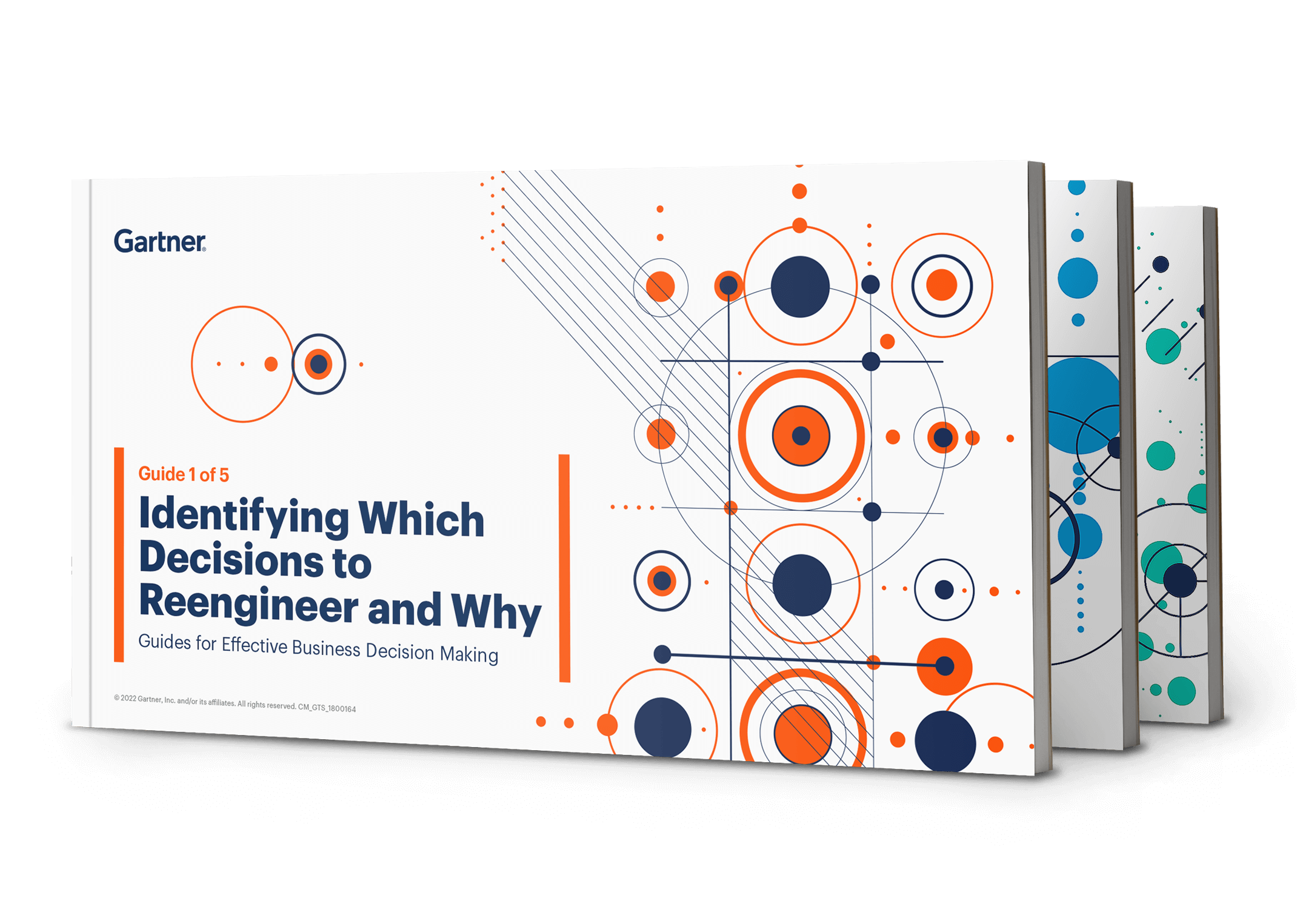Better business decisions happen when business, data, analytics and other IT leaders work together to bring their unique competencies to the art and science of effective decision-making. Data-driven decision-making is critical to creating business value today but, in practice, it requires a mix of actions and capabilities—some technical, some not.
Gartner’s Essential Guides for Effective Decision Making are designed to help you create business value by re-engineering how your business makes decisions. Each guide provides data-driven, actionable insights, focussed on how you can prepare, establish and engage your key stakeholders while also sharing some critical tips for delivery from our experts.
